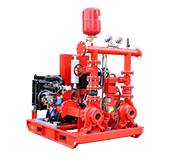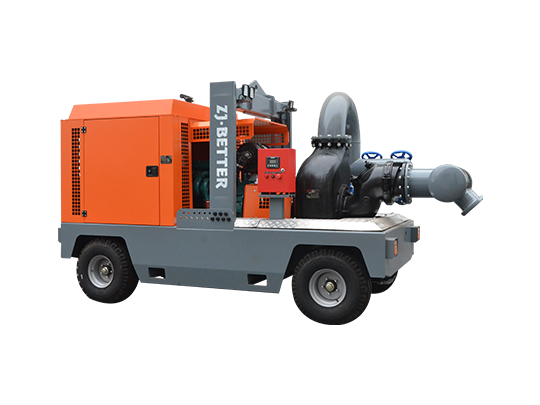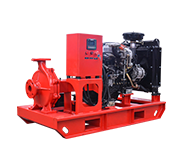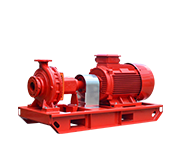Use of diesel self priming pump:
(1) Preparation and inspection before starting:
1. This series of diesel engine self-priming pumps are lubricated with high-quality calcium-based butter and No. 10 oil according to the working condition of the pump. If the pump is lubricated with grease, the grease should be regularly added to the bearing housing. The oil-lubricated pump should be used. If the oil level is insufficient, add it.
2. Check whether the liquid in the pump casing is higher than the upper edge of the impeller. If it is insufficient, the liquid can be injected directly into the pump body from the filling port on the pump casing, and should not be started in the case of insufficient liquid storage. Otherwise the pump will not work properly and the mechanical seal will be damaged.
3. Check if the rotating parts of the pump are stuck with magnetic collision.
4. Check the nut of the pump body and the nuts at the joints for looseness.
5. Check the coaxiality and parallelism of the pump shaft and the motor shaft.
6. Check the inlet pipe for leaks. If there is a leak, you must try to eliminate it.
7. Open the valve of the suction line. Open the (not fully open) outlet control valve.

(2) Startup and operation:
1. Jog the self priming diesel driven pumps, pay attention to whether the steering of the pump shaft is correct.
2. Pay attention to the abnormal sound and vibration when turning.
3. Pay attention to the pressure gauge and vacuum gauge reading. After the start of the pressure gauge and vacuum gauge reading after a period of fluctuations indicating stable, it indicates that the pump has been filled with liquid and entered the normal infusion operation.
4. Before the pump enters the normal infusion operation, it is self-priming. Pay special attention to the increase of water temperature inside the pump. If the process is too long and the water temperature in the pump is too high, stop the pump and check the cause.
5. If the temperature of the liquid in the pump is too high and it is difficult to self-priming, then it can be temporarily stopped. Use the liquid in the discharge line to flow back into the pump or directly add liquid to the pump at the filling port on the pump body. The liquid in the pump is cooled. Then start it.
6. If the pump experiences strong vibration and exposure during the working process, it may be caused by cavitation of the pump. There are two reasons for cavitation: one is that the inlet pipe flow rate is too large. The second is that the suction stroke is too high. When the flow rate is too large, the outlet control valve can be adjusted. The pressure gauge reading should be raised. When the inlet pipe is blocked, it should be eliminated in time: when the suction stroke is too high, the installation height of the pump can be appropriately reduced.
7. The pump stops during the working process. When it needs to be restarted, the outlet control valve should be slightly opened (not fully closed), which is beneficial to the discharge of gas from the discharge port during the self-priming process, and ensures that the pump is lighter. Start under load.
8. Pay attention to check the pipeline system for leakage.
(3) Stop the pump:
1. First, the gate valve on the discharge line must be closed.
2. Stop the pump from rotating.
3. In the cold season, the liquid in the pump body and the water in the cooling chamber of the bearing body should be emptied to prevent frost cracking.






